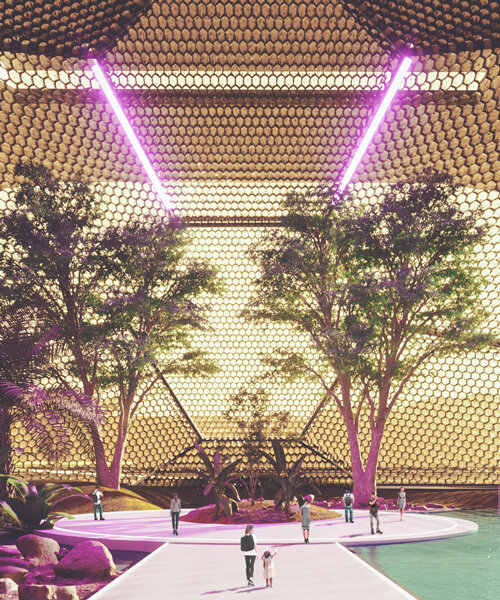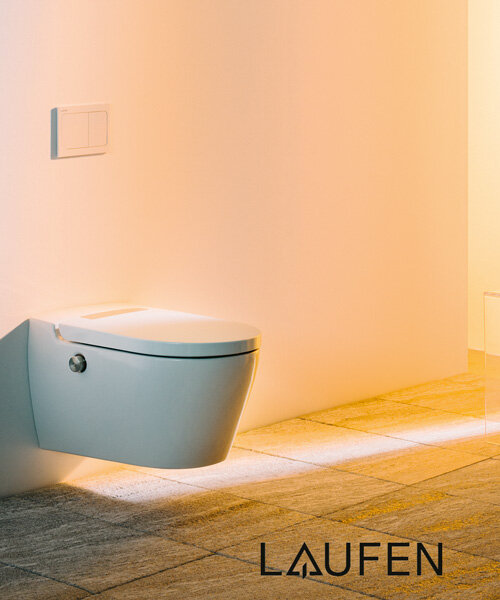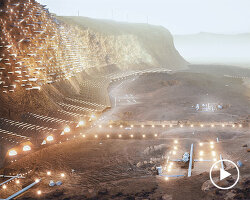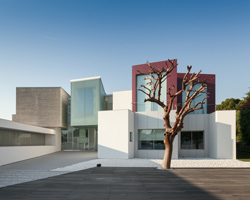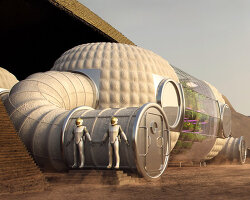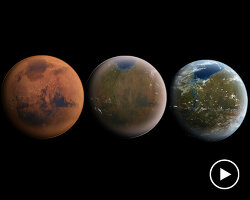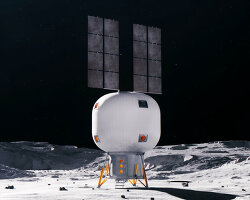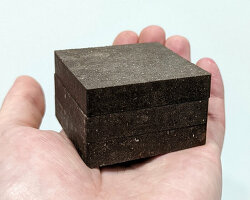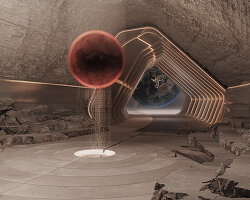countless cylinders, spheres, and domes protrude from a sheer cliff face, protecting their occupants from intense radiation, atmospheric pressure, and fluctuating thermal conditions. from here, a high speed elevator system transports residents from their cliff-side quarters to the valley below, where parks and other communal spaces offer views across the vast expanse of the red planet towards the horizon beyond. this is mars in the year 2100 — or at least it could be.
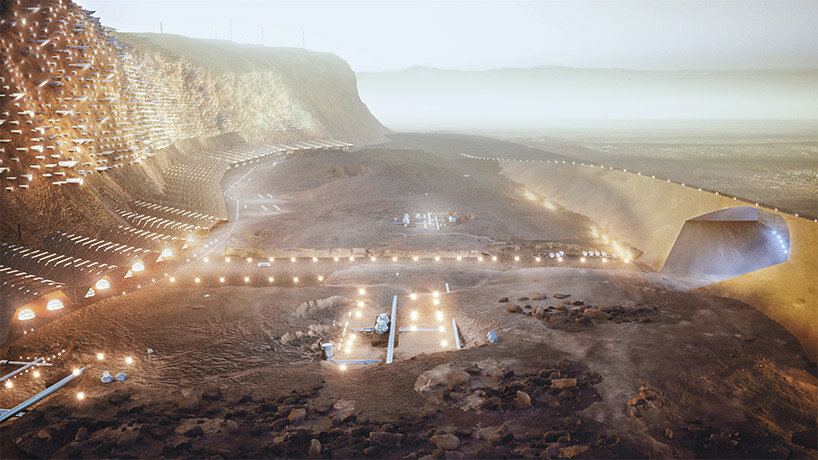
all images © ABIBOO studio / SOnet (renders by gonzalo rojas, sebastián rodriguez & verónica florido)
responding to a brief set by the mars society, SONet — a community of professionals in the fields of astrobiology, astronomy, and architecture (among others) — has presented plans for a permanent settlement on mars that could accommodate one million people. unperturbed by the planet’s challenging conditions, the team researched how they could use mars’ limited resources to design a lasting, self-supporting ecosystem. to learn more about the project, we spoke with architect alfredo muñoz, board member of SONet and founder of ABIBOO studio.
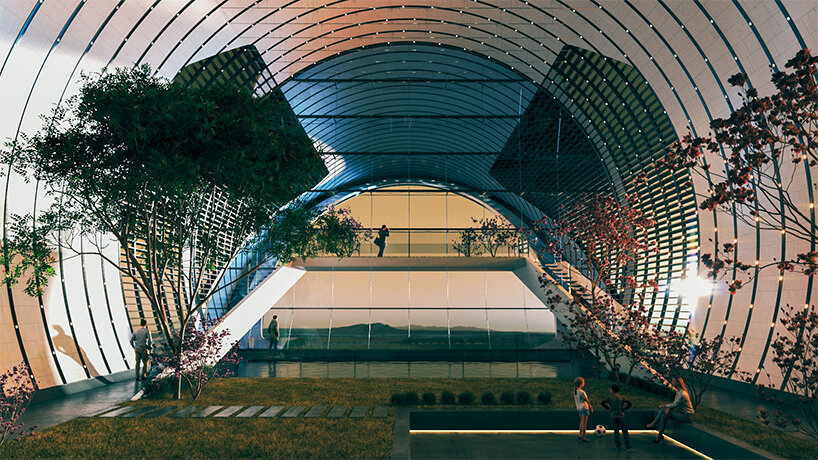
‘it’s fascinating to realize that we could actually see a permanent colony in our generation,’ the architect tells designboom. ‘it is realistic, but how realistic depends on the will and the amount of resources that we put into it. it definitely gives a lot of hope, also because of the things that we learn by doing this, that can be directly implemented on earth.’ muñoz discusses the challenges of designing for an uncharted territory and considers if the first settlement could really be up and running by the year 2100. read our in-depth interview in full below.
designboom (DB): can you start by explaining your role within SONet, and how the team came together?
alfredo muñoz (AM): I am on the board of SONet and I am also one of the founders, but the main person behind SONet is an astrophysicist called guillem anglada. he is the person that discovered ‘proxima b’, which is the closest exoplanet to earth. both guillem and I have been considered two of the youngest european leaders by an organization called friends of europe. twice a year we meet in different locations in europe to talk about policy-making. guillem is really passionate about architecture, and I’m super passionate about astrophysics. he explained to me that he had been thinking about creating a community of academics and professionals that could brainstorm ideas and creative solutions for the sustainable development of work. obviously, this was in my area of interest. experts from different backgrounds in planetary geology, astrophysics, physics, biology, and other different fields gathered to create SONet so we could all think how to create sustainable solutions.
then someone on the team mentioned a competition by the mars society. as we were already debating some solutions for mars, it was a perfect match. the pandemic helped a lot because we were stuck at home. I put a decent amount of team members in our studio to work on it. we were working for almost five months on the solution and now things are going at a very good pace.
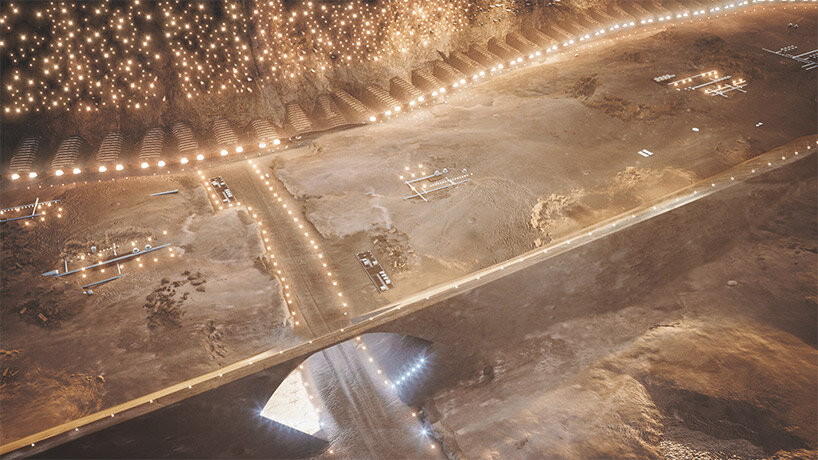
DB: have you always been interested in space exploration?
AM: I had two passions when I was a kid. at three years old, I wanted to be an architect. but then, at the age of 13, when I started to get exposed to physics, I started to question if architecture was my calling because I was really fascinated with astrophysics and anything related to physics. I made it to the final of a national physics competition in spain and I realized that there were so many smart people around. I thought I was probably not going to be as smart as everyone at that competition!
I’m so passionate about architecture also, so I decided on architecture. but I always felt that I wanted to find a common area of interest, where that passion for architecture is combined with that fascination that I developed later in life for astrophysics. so when guillem put together this team, and we started coming up with ideas, it was obviously a fascinating match because it brought together my two biggest passions since childhood. I always say that when I decided not to go into physics, I decided to let go of the possibility of understanding space. but then, by studying architecture and being an architect, I was able to learn how to create space. this is really fascinating because now I don’t know how space works, but I can create it!
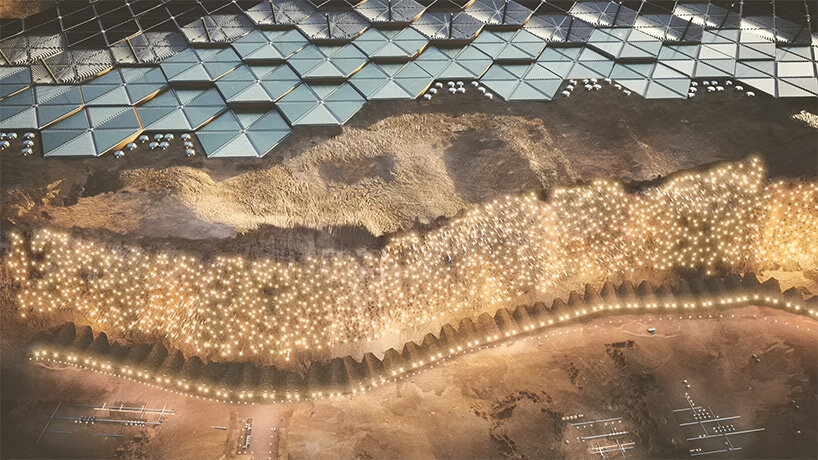
DB: when you began working on the project, how quickly did you realize the importance of designing a city on mars that was self sustainable?
AM: it was critical for two main reasons. the first is that we want it to be sustainable. sustainability is not only about ensuring that it does not damage the environment, but it’s also about using little resources to achieve a lot, which also affects the economics. the team all came together with the understanding that in order to provide a solution, we could not bring materials from earth because the amount of energy associated with that scenario is not realistic. we needed to have a design that could be implemented with whatever we had on mars.
at the same time, the other big objective was scalability. as the mars society was asking for a proposal for up to a million people, it was important to ensure that in order to be able to grow at the speed that the city would require to be able to operate, it needed to be self sustained. it is very different to have a solution for a temporary settlement. let’s say 20 astronauts are going to mars, and they are going to be there for two or four years and then they come back. the accommodation for those astronauts has certain requirements, which are very different to the requirements that we have when we are looking into a permanent settlement on mars that is of a larger scale.
that was a critical aspect of the design, because we were not envisioning the proposal as something temporary, but it had to have the characteristics of a city with its own identity and opportunity for its own habitat, so that humans feel connected to their home. especially as the people that are born on mars might not know what earth is. that core idea of sustainability, scalability, and self-dependency is something that was very, very important from the early phases of the project.
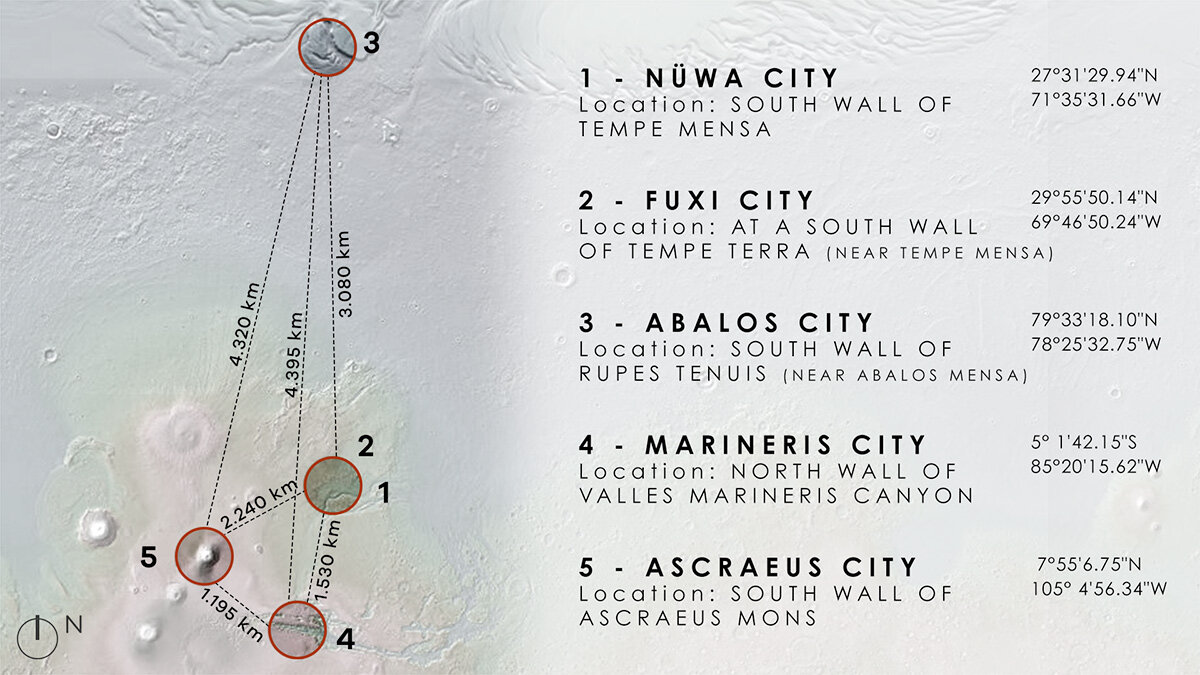
DB: how did you decide on the configuration of the settlement and the five cities?
AM: there are three main reasons why we decided to split it into five cities. one of the reasons is access to resources. mars has very few resources in comparison to earth, so we have to mine and process the minerals, but they are not located in one place. in order to be able to ensure that we can develop the city and the life support systems with the resources available, we need to be able to obtain some of those elements. for example, water is a very important element. tempe mensa, which is where we are proposing for the capital city nüwa, has a substantial amount of water, but it’s not enough to be able to provide water for more than 400,000 people. so we had to go to another city in the north pole, which has a lot of ice so we can mine that water.
however, there are other minerals that are needed to create the chemical combinations to obtain the materials that we need for construction of the city. the team of scientists at SONet explained that there is not one place that has all the resources we need. at the same time, it was important to ensure that the climate of the locations was not too bad. I’m saying not too bad, because it’s difficult to find good weather on mars considering that it is so cold, and the frequency of the temperature changes so much during the day and night. in that sense, we tried to keep the locations close to the equator.
the second reason is that we had to consider what would happen if one city had a problem — if there’s an explosion, for example. we don’t want an entire colony to disappear from mars, so having the resiliency of five cities ensures that we have the possibility of a being on the safer side. obviously, systems will have to be in place so that doesn’t happen, but still, it’s critical to have that resiliency.
the third reason is connected with the geography and the geology of mars. I’m going to expand a little bit more here because it’s important to understand why the city is the way it is, and why it’s located where it’s located. basically it is a cliff city and building inside the cliff solves a huge amount of problems.
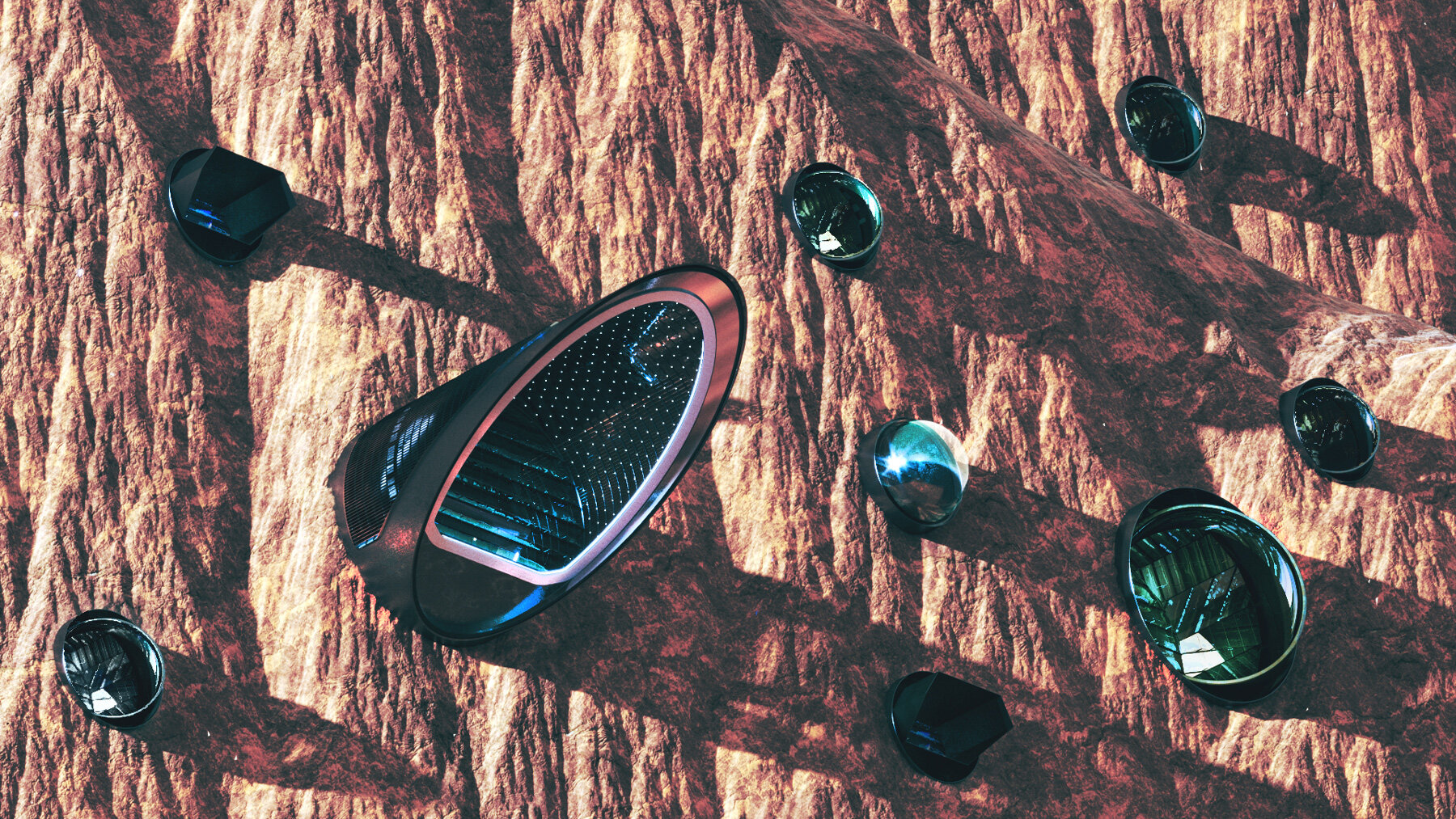
AM (continued): the first one is radiation. anyone that is exposed to the sky on mars will have big issues with cancer, and, in the long term, death. it doesn’t matter if it’s from the sun, or just from the sky, so we need to have protection. we can solve this with roofs, but that can be quite expensive because we need to place those canopies in order to provide that protection. then we have another problem, which is a very big problem, which is pressure from inside the buildings. here on earth what architects face is that buildings collapse because of the gravity, they fall. on mars, the problem is the opposite. the buildings could explode because the atmospheric pressure is approximately 1 atmosphere.
here on earth, if you go to areas like bolivia, the atmospheric pressure is around 0.7, but for the sake of being brief, the atmospheric pressure we will have inside a building on mars is 1 atmosphere. it’s like a balloon, when you’re inflating the balloon, there is a point that it explodes. the bigger the inside of the volume, the more challenges it will have and the building will explode. so the amount of structure required for ensuring that buildings on mars do not explode is huge, meaning a lot of cost and a lot of material.
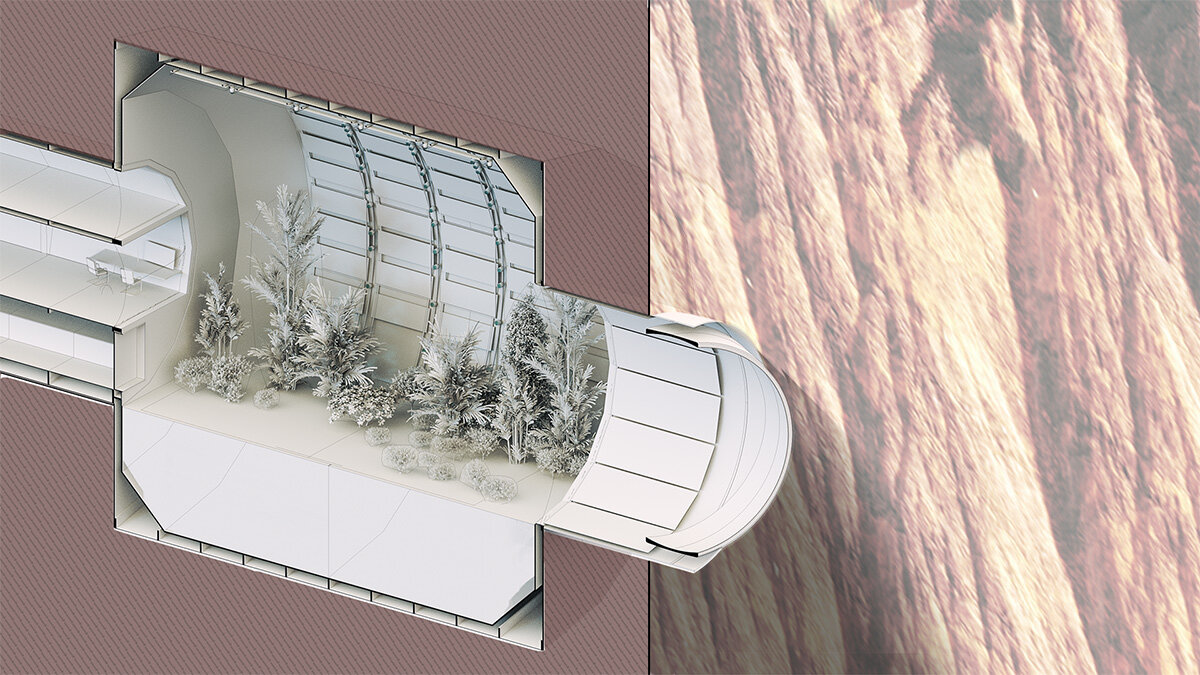
AM (continued): at the same time, mars has a lot of challenges with thermal variations: the night and the day have big differences. if we have any building that is exposed to the outside air, the thermal movement from the inside to the outside will be huge, and we will lose a lot of energy. again, this would mean spending too much energy and money in order to keep the comfort inside.
the reason why we proposed building inside a cliff is because, by being underground, we solve all of these problems. we are protected from radiation and the rock absorbs the pressure from the inside. also, because we’re inside the rock, the mass is really high, therefore the variation of the temperature is absorbed. then, because we are in a cliff, we have the possibility of bringing indirect light, which is a huge advantage because humans need light. nüwa was always conceived as a permanent settlement and humans are going to live there, so having access to light was critical.
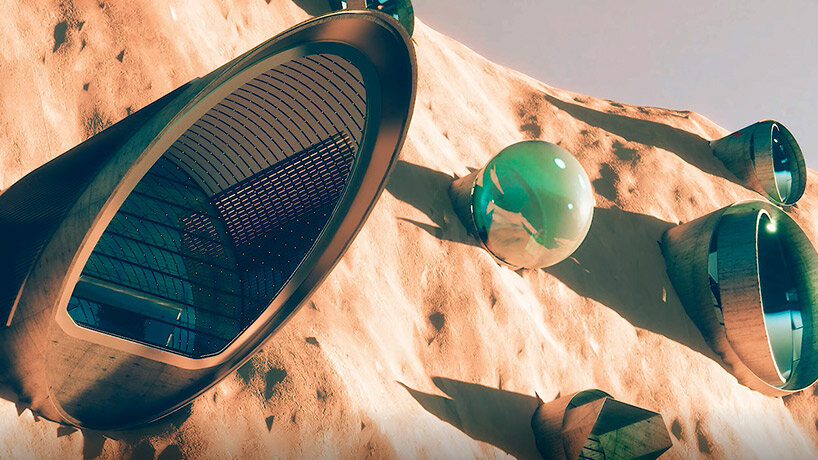
AM (continued): therefore, the third reason why we decided to divide the settlement into five cities was that, based on the analysis and the different programs that we wanted, we realized that we could not find a single cliff or canyon that could meet our requirements. there are a huge amount of really large canyons, but they have some challenges in terms of access to resources. after we identified tempe mensa, which is a perfect size for 250,000 people, we started looking and found that there were a lot of cliffs and canyons that could be ideal. then we needed to allocate what locations had the right combination of access to resources, proper temperature, and cliffs or canyons that were the right length and height to be able to propose a very compact solution. the cliffs on mars are huge. tempe mensa, which is where we have nüwa, is one kilometer in height, but there are canyons and cliffs that are substantially larger than that.
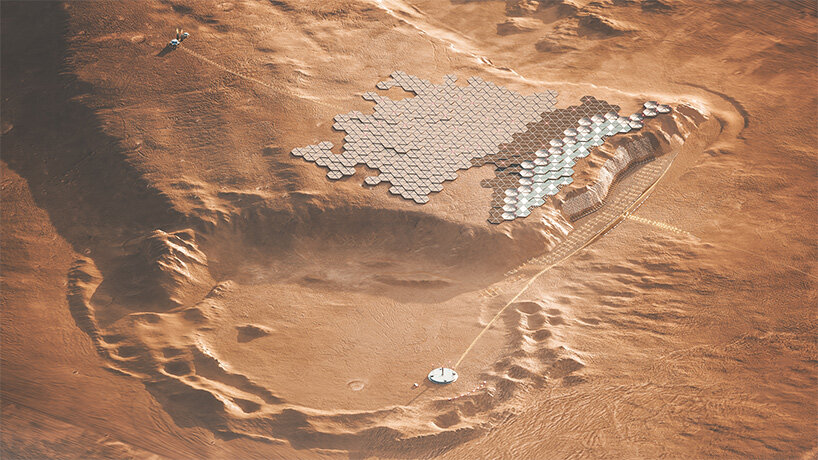
DB: what will day-to-day life on mars be like? let’s start by talking about transportation — how will people get around?
AM: transportation is very different between the cities compared with inside the cities. the challenge that we have on mars is that the air is very thin. we cannot really fly easily from one location to another. between the cities, a strategy that we are envisioning at least for now, is light rail transport. for this, we need to provide a radiation shield for the people that will go inside the trains. we found, based on the analysis from the scientists at SONet, that this solution was the most effective and efficient between cities.
within cities, transportation is very different. although we have light rails that connect the space shuttle with the different parts of the city, we also have a high speed elevator system. basically, the city is a vertical city and most of the things that happen on a day-to-day basis are inside that cliff. but then we have other areas: the lower part of the cliff which we are calling the ‘valley’, and the top part of the cliff which is the ‘mesa’. the mesa basically covers all activities related to food production, energy production, and industrial production — all elements where most humans will not have to go.
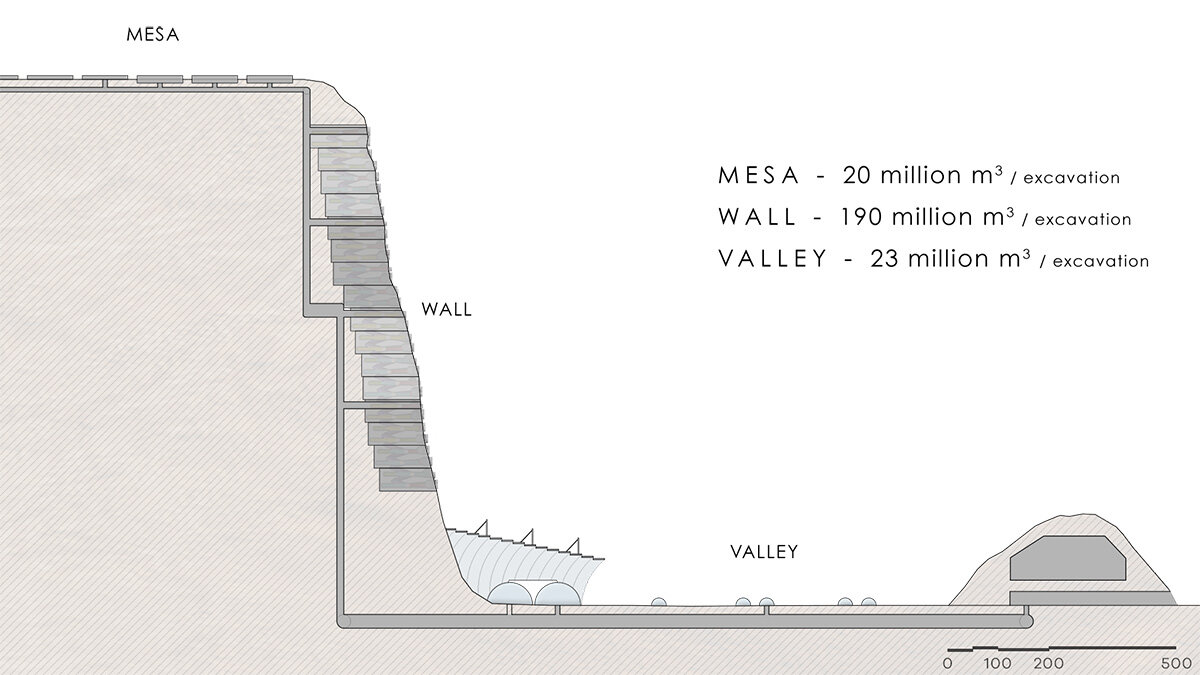
AM (continued): meanwhile, the lower part covers the activities that are more associated with the relationships among the community in the city. parks, auditoriums, and sports centers will require bigger spaces, where being embedded in the cliff is not ideal.
in the valley we have some very large domes that allow you to see the horizon. these domes are shielded by canopies that use material excavated from the tunnel. the domes cover some of the common areas that are used for the civil interaction of the city. all these areas are connected with a light rail, but they are also connected to the high speed elevator system.
in between the mesa and the valley, the vertical city is organized as a modular solution, which we are calling ‘macro building’. the strategy of a macro building is similar to a mixed-use, high density project here on earth, like a skyscraper with residences, offices, and retail. the mixed-use building, the macro building in this case, solves all the day-to-day activities, so people don’t need to leave. these macro buildings are connected by a high speed elevator system. if you go to a particular macro building, you go out of that sky lobby, you have compression areas, and then you go to the independent vertical transportation that is associated with that macro building.
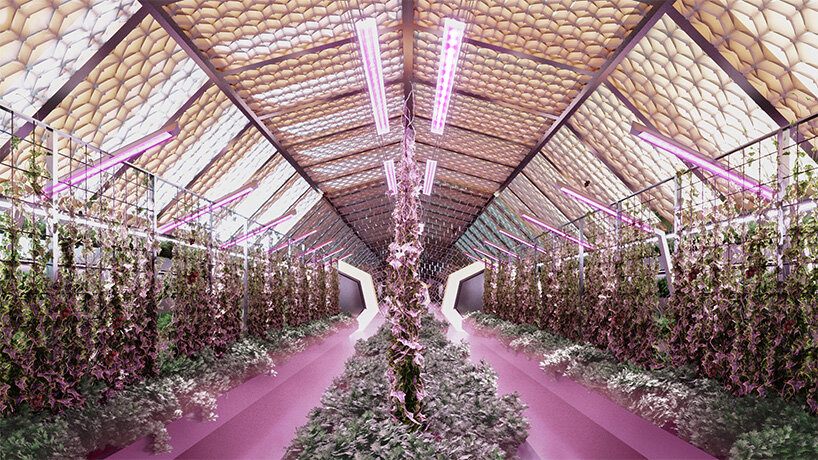
DB: what food will be available on mars, and what are the agricultural processes involved?
AM: the diet will be reliant on crop vegetables, as it is not sustainable or efficient to have a diet that is based on animals. there are many reasons for it, one of them is that the amount of energy that it requires to feed the animals will be too high to provide the same amount of energy that humans need. at the same time, space is very costly on mars because we have to manufacture air. so the amount of space that is required for animals is way too high and it is not efficient.
based on the analysis of SONet’s life-support expert, gisela detrell, in nüwa the crops and microalgae comprise approximately 70% of the food, and then we have some components that are cellular made, which is 15%, and insects which are 10%. there will be very, very, very few animals, just 1%. we’re still debating if we want to go full vegan or not, but for now we’re considering a very small percentage that could be animal based, but the core will be microalgae, cellular meat, and insects. maybe this is not very appealing for everyone, but the life support team are indicating that insects bring a lot of value because of the proteins they provide.
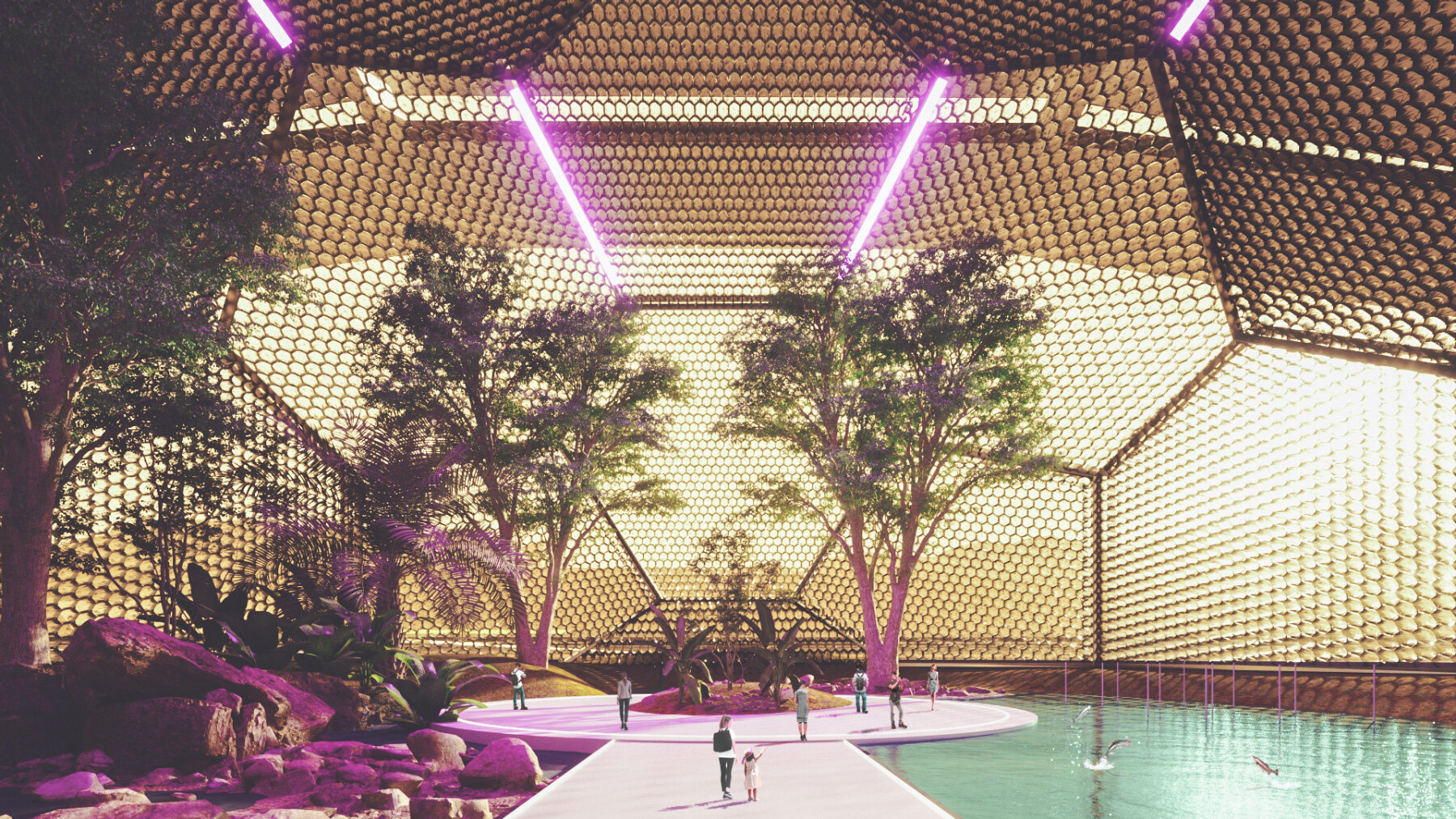
DB: what are the next steps for the project?
AM: we are now working at the phase where we are exploring and doing prototypes of the core elements, such as the tunneling habitat. we are looking into developing that prototype here on earth. we are also at the phase where we are developing the actual design of what the buildings in the cliff are about, as well as the rest of the spaces. obviously, there is still a lot of work to be done. once the project is further developed from the design and architectural point of view, and we have the prototypes on earth, we will be able to experiment with some of the potential challenges that we will face when we are on mars.
for example, we have been working with the mars society to try to start simulating some of the first phases of implementation of a settlement with the characteristics of nüwa by doing a similar processes here on earth. we are also exploring the possibility of expanding the experience of nüwa here on earth by allowing potentially larger buildings with the same technology and systems that could allow for extreme environment tourism.
we are going in different routes, but the ultimate goal is to be able to learn most of the challenges that we will face when we actually go to build a city on mars. however, in order to do that, we need to develop the design further. secondly, we need to work with a bigger team of scientists to understand some of the things that we might have missed, and thirdly we need to a start envisioning the critical parts from the technical point of view that are still not resolved. therefore we need to involve the international community to find solutions. obviously, the fourth thing is we need funding to make this happen.
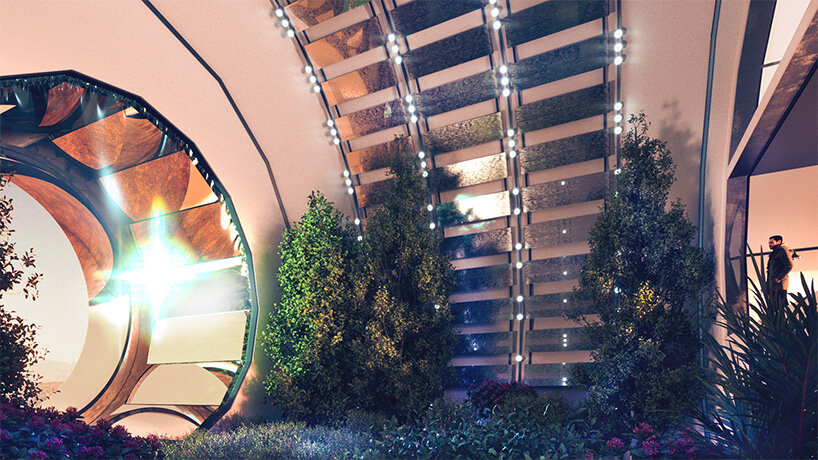
DB: in what ways can your research and analysis be applied to find solutions here on earth?
AM: there are so many interesting things that came up. from an urban point of view, in manhattan, if we include the built up area and the parks and the streets, we estimated that there is around 120 square meters per person (approximately 1,300 square feet). when we were working on the solution for nüwa, we were similar to that number. so we know that from an infrastructural point of view, we were able to provide a very dense solution.
but when we go to the agricultural component, there are huge differences. for example, the entire area associated with crops in nüwa is solved with a little less than 120 square meters per person (1,300 sqf). on earth, the equivalent amount of space that it requires to provide crops and the space for the crops associated with animals and farming is 6,000 square meters (60,000 sqf) per person.
when we hear about the problems that we have in the amazon, and that they’re burning half of the amazon because they need a space for cows to grow, you realize that we’re spending so much land on earth to provide food for humans that scientists are saying is not required based on what we have done on mars. so we could actually implement that knowledge to make earth a much more sustainable place.
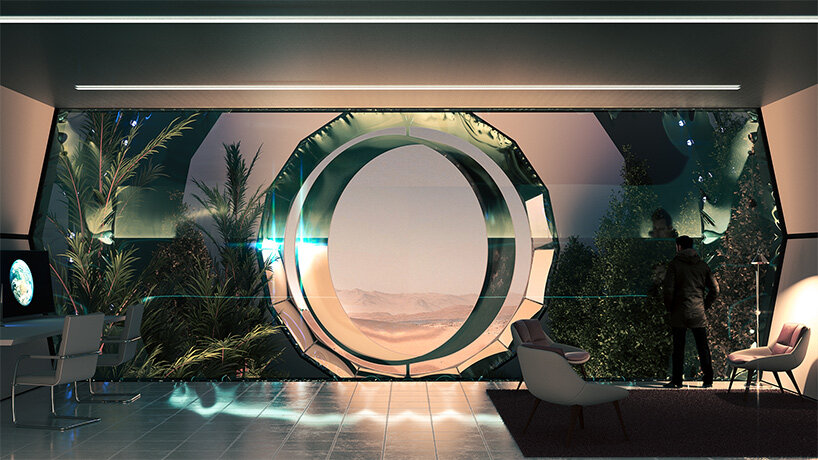
AM (continued): another difference is that on mars we need plants for oxygen generation, as well as other infrastructure, that on earth we take for granted. we started thinking that usually on earth we fragment, and we create beautiful parks, and then all the infrastructure goes separately. but when we were creating the common areas and parks for mars, we wanted to integrate some of those life support systems as monuments in those public parks. because when you’re on mars, you see that infrastructure like sewage plants is what’s allowing you to live. when you see those tanks that generate oxygen it makes you realize: wow, this is amazing, I’m living thanks to this! from the design point of view, an urban point of view, and the landscaping point of view, a lot of the things that here on earth we start putting aside, start to become the elements that give identity to a particular location.
it is the same with materials. when we started looking into materials, we realized how difficult, expensive, and unsustainable concrete is. because we have been using it for for so many years, we keep using it, but steel and many other solutions are much more sustainable. learning from building in extreme environments like mars helps us think outside of the box and be aware of what we could do differently on earth. we’re actually implementing some of those ideas with our other projects at ABIBOO. in that sense, by solving the needs of a settlement on mars, we are able to find solutions and ideas that can be implemented on earth.
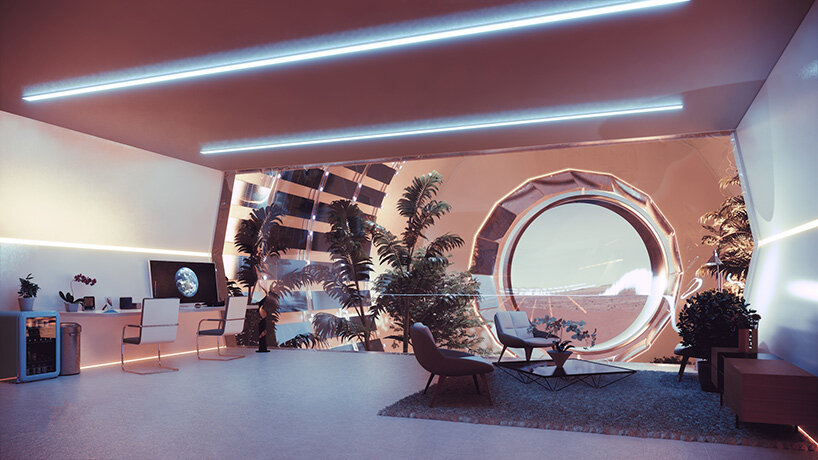
DB: in terms of a time-frame, if everything fell into place, when could construction begin? when could people start going to mars and living there?
AM: there are critical paths associated with the schedule. we still don’t have the technology that is required for the generation of oxygen, and the technology associated with obtaining carbon from water and from CO2 on a larger scale is not available yet. the scientists feel comfortable about the science behind it, but still we have not been able to manufacture steel easily with water and CO2. these are two critical aspects for what nüwa will require.
we have the technology for the tunneling system and many of the other solutions are based on current technology, artificial intelligence, and robotics. we feel comfortable, the way that things are developing nowadays, that in 10-15 years, they could be actually implemented on mars. but one of the critical aspects is that nüwa is conceived as a permanent settlement and it is very different than a temporary solution. nüwa will require that we do on the ground geology analysis by astronauts. so until we send astronauts there, that can actually do the testing of the different requirements and the geological analysis of the different cliffs that we are considering, it will not be possible to take all of that learning and say we can actually build it. based on the information we have now, we feel comfortable that the rock is strong enough to provide the 10 meter diameters that we need. but again, in order to actually build it, it’s like on earth — we’re not going to go through a mountain without actually doing the proper analysis.
we feel approximately, based also on the schedule that elon musk has shared about the possibility of sending people to mars, that by september 2054, there is a window of opportunity that we can go from earth to mars. it’s very preliminary, and there is still a lot of work to be done and a lot of challenges that need to be resolved, but we feel that from a scientific point of view, 2054 could be when we are ready to start construction. then, because the system is very scalable, it can go very quickly. if the rest of the challenges that I summarized are solved, then we believe that by 2100, it could be finished. again, there are a lot of ifs, but I’m very optimistic it could be done if there is enough will and enough of a community trying to solve the challenges with oxygen and the transformation of materials from from CO2 and water into steel.
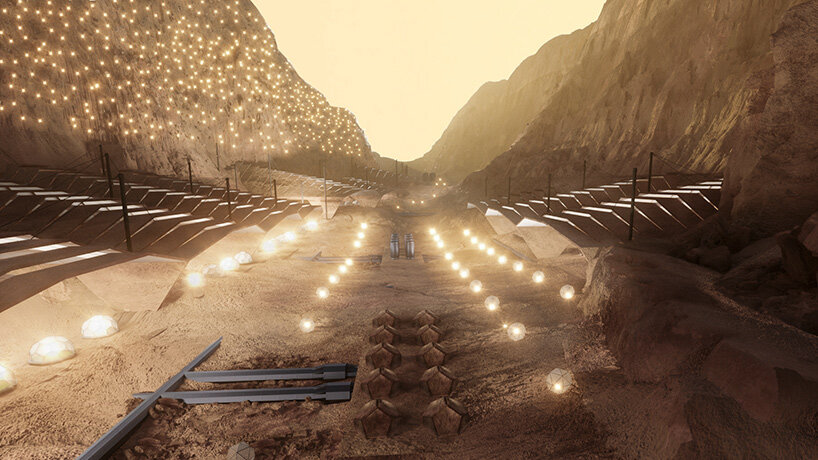
DB: how excited are you about the possibility of a permanent colony on mars?
AM: it’s fascinating to realize that we could actually see a permanent colony in our generation. it is realistic, but how realistic depends on the will and the amount of resources that we put into it. it definitely gives a lot of hope, also because of the things that we learn by doing this, that can be directly implemented on earth.
a colony on mars could expand what humans are as a species, but there are very few people that are going to go to mars. so all of this should be taken as a learning opportunity to make earth a better place. some people ask, why are we not solving the problems on earth before we go to mars? but we can do both. by solving one need we are getting information about how to solve the other. in that sense, it is fascinating and really, really exciting what can happen in the years ahead.
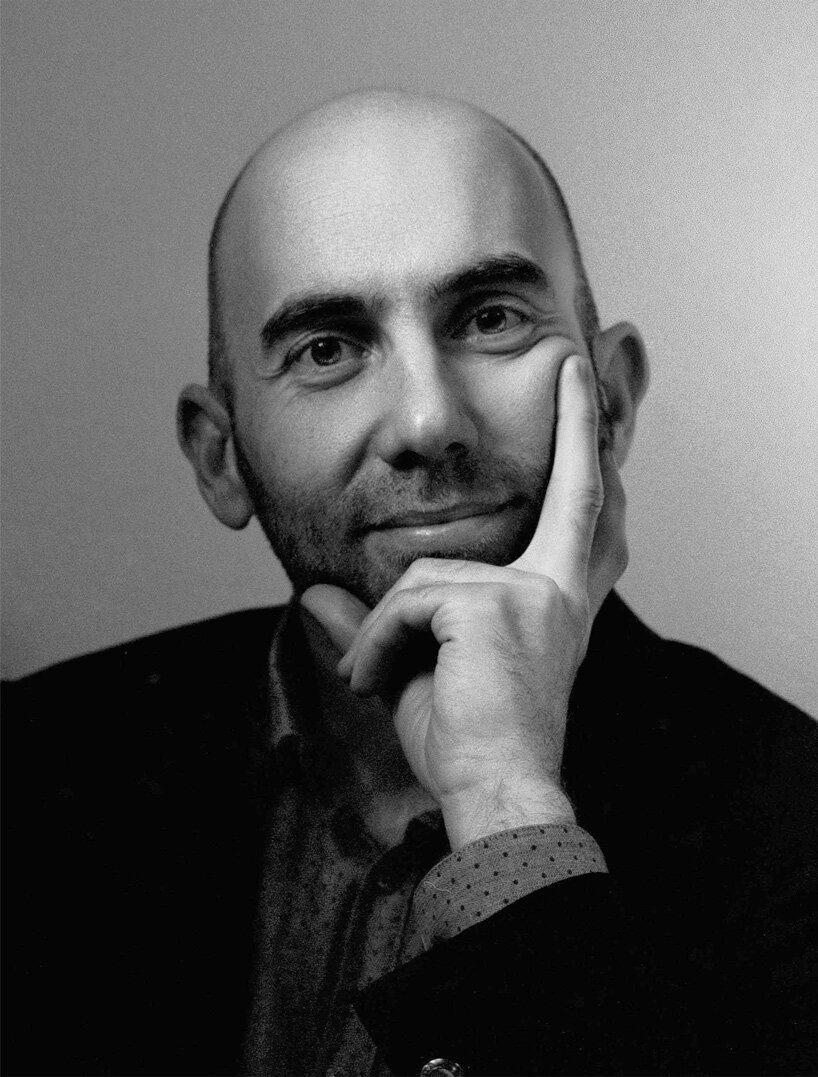
alfredo muñoz, founder of ABIBOO studio
project info:
authors: guillem anglada-escudé, alfredo muñoz herrero, miquel sureda, gisela detrell, ignasi casanova, david cullen, miquel banchs i piqué, gonzalo rojas, engeland apostol, sebastián rodríguez, verónica florido, philipp hartlieb, laia ribas, owen hughes pearce, david de la torre
contributors: jordi miralda escudé, rafael harillo gomez-pastrana, lluis soler, paula betriu, uygar atalay, pau cardona, oscar macia, eric fimbinger, stephanie hensley, carlos sierra, elena montero, robert myhill, rory beard
sponsors: ABIBOO studio, CSIC, UPC, university of stuttgart, cranfield university, IEEC, montan universitat loeben, university of portsmouth
